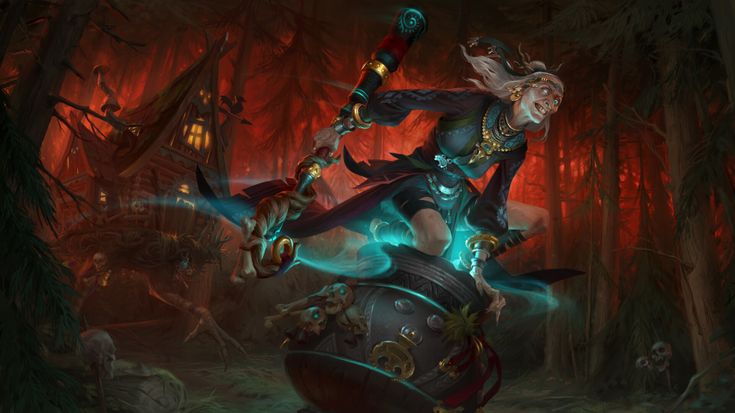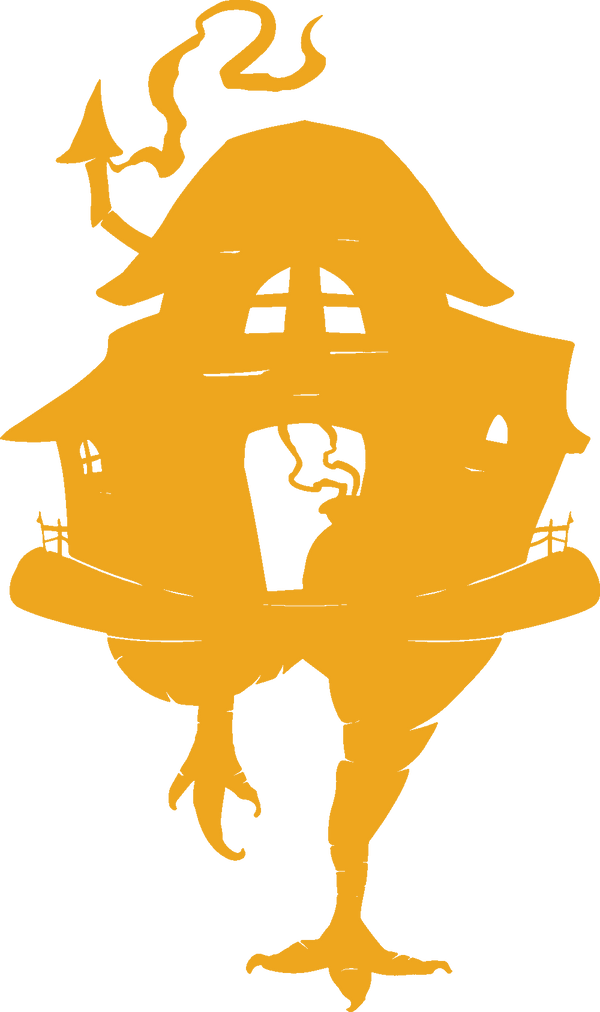
Baba Yaga: Legend of The First Witch I
Compartir
Quite possibly the best-known character from Slavic folklore and legend, her name is Yaga but she’s Jezda in some places and Jazi Baba in others - it all depends on who tells the tale!
Baba Yaga is an immensely complex character for one blog, so in this short blog series, we’ll share and explore her story around the metaphorical fire: her powers, her importance and meaning, tales of Baba Yaga still told to this day, and where she fits in our pop culture, gaming, and literature.
In my youth, and that of many children in Bulgaria, Yaga meant a powerful and petrifying witch (used as a parenting tool to this day, might I add, to instill fear) who comes at night on her mortar and pestle, or broom (a broom is more prominent in pan-European stories of her) to steal and eat naughty children who don’t listen to their elders…or sometimes just because she’s hungry.
And on that note, let's dive in!
Who and What is Baba Yaga?

Let’s start with the basics. The word ‘baba’ (from babushka) means granny or ‘old woman.’ In Old Kievan Russian (Old East Slavic or Proto-Slavic, not really spoken these days and mostly prominent between the 10th-14th centuries), the term could also be taken to mean sorceress, herbalist, midwife, or fortune teller.
The word Yaga, on the other hand, is a bit more complicated. In some tales, it is taken to mean ‘hag,’ and in others, it is simply her name.
The origin of ’Iaga’ or ’Yaga’ is quite obscure, inspiring a several interpretations by linguists (citing Brian Cooper and scholars Vasilii Levshin & Andreas Johns here) such as illness, rage, fury, horror, wicked wood nymph, witch, evil woman, pain, serpent, wife, stepmother, mother.
However, her full unofficial pop-title is ‘Granny Witch’ or ‘Grandmother Witch.’ Though a disputed translation, it is what she’s known as today.
In the oldest surviving stories about her, and in the outstanding book by Andreas Johns, we know Yaga’s origin would have been that of an Earth-Mother Goddess and possibly an early Goddess of Death known as Iagaia.

Some others think she is the personification of nature - simultaneously cruel and kind; a deity of fertility and ferociousness. Thus, in stories she can be both malevolent and benevolent.
It must be noted however, rather than a dualistic impression Yaga has more of a triune one - the three-in-one deal, akin to the Three Fates from Greek Myth or the Three Norns from Norse Myth, which Slavs would’ve known or heard of due to the constant trade/conflict with both cultures.
The first known reference to Baba Yaga (or "Iaga") occurs in 1755, found in Mikhail V. Lomonosov's Russian Grammar. In Lomonosov's book Yaga is mentioned twice, along other figures (mainly) from Slavic folklore and legend; this being the first instance.
The second instance is within a list of Slavic gods (and creatures), next to their assumed equals in Roman mythology (e.g., the Slavic god Perun, appears close or equal to the Roman god Jupiter - in Greek, Zeus).
Baba Yaga, however, appears in a third section without an equal, which highlights her uniqueness. Despite this being this first known record, it still alludes to her mystical and probably ancient origin.
Power of Three

The reason Baba Yaga’s more of a three-in-one rather than a dualistic ‘bad’ vs ‘evil’ (a more Christian approach if I may add, perhaps even Abrahamic) is the aspects she exhibits in our tales and records:
- In her primary aspect she represents a sort of fertility goddess, bringing new life and showing benevolent qualities.
- In her secondary she's taken to weave the course of human life in a benevolent and malevolent manner.
- Finally, in her tertiary she determines human death, again in a benevolent or malevolent form, which is her better-known aspect.
Once more, similarities are evident between Yaga and the Norns in Norse mythology (or Greek Fates) who shape human life, destiny and death. However, unlike Baba Yaga’s loose equivalents in other mythologies, what sets her apart is that she is all of them in one.
The following quote is one of my favourites about her, citing the scholar Mikhail Chulkov from Johnas’s book. The quote portrays her as a maiden-mother-crone figure, through her (likely metaphorical) children. Metaphorical because they may be representing her stages as an immortal being (her final, wise, and most powerful being her crone phase, though this is considered entirely disputable):
“The Slavs venerated the underworld goddess by this name [Yaga or Iagaia], representing her as a frightening figure seated in an iron mortar, with an iron pestle in her hands; they made blood sacrifice to her, thinking that she fed it to the two granddaughters attributed to her, and that she delighted in the shedding of blood herself. (16)”
So, her triune aspect is recognised - she’s not Yin & Yang nor Heaven and Hell. However, friendly reminder everything is up for debate, including her name, so yeah.
But what are her powers I hear you think? Find Out HERE in part II of this short blog series.
In the meantime Stay tuned for more exciting stuff, and as always you can follow us on Twitter, Instagram, and Facebook for more updates!
